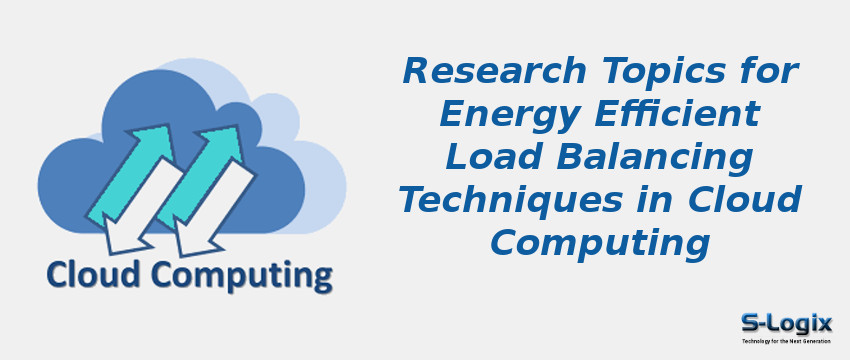Load balancing in cloud computing refers to distributing workloads across multiple computing resources to improve performance, minimize downtime, and ensure resource utilization.
Energy efficiency in cloud computing is concerned with reducing the energy consumption of these resources to minimize the environmental impact and reduce operational costs. Energy efficient load balancing techniques in cloud computing discuss methods and algorithms used to distribute workloads and resources to minimize energy consumption while maintaining performance and availability.
Load balancing is a critical component of cloud computing, as it helps to ensure that resources are utilized effectively and efficiently, avoiding resource contention and optimizing performance.
However, traditional load-balancing algorithms can consume a significant amount of energy and negatively impact the overall energy efficiency of cloud computing environments. Energy-efficient load-balancing techniques address this issue by considering the energy consumption of resources and workloads when making load-balancing decisions.
There are several energy efficient load balancing techniques in cloud computing
• Power-Aware Load Balancing: Monitoring resource utilization and adjusting workloads to minimize energy consumption.
• Task Migration: Moving workloads from high-energy consuming resources to low-energy consuming ones to reduce overall energy consumption.
• Virtual Machine Consolidation: Consolidating multiple virtual machines onto fewer physical servers to reduce energy consumption.
• Dynamic Resource Allocation: Allocating computing resources based on the current workload and releasing unused resources to save energy.
• Green Load Balancing: Selecting the most energy-efficient resources for workloads based on power consumption and utilization metrics.
Some of the algorithms involved in using energy-efficient load-balancing techniques in cloud computing include
• Threshold-Based Algorithms: Utilizes threshold values to monitor resource utilization and trigger load-balancing decisions.
• Energy-Aware Load Balancing Algorithms: Prioritizes resource allocation based on energy consumption and utilization metrics.
• Application-Level Load Balancing Algorithms: Assign resources based on the specific requirements of the application being executed.
• Proportional Fair Scheduling Algorithms: Distribute resources by balancing current load and historical usage patterns.
• Resource Contention-Aware Load Balancing Algorithms: These algorithms consider resource contention to improve energy efficiency and reduce energy consumption.
• Workload Characterization-Based Load Balancing Algorithms: Allocate resources based on the characteristics of the workload, such as CPU utilization, memory utilization, and I/O utilization.
There are several issues associated with energy-efficient load-balancing techniques in cloud computing, including
• Load Imbalance: Load balancing algorithms can still result in imbalanced resource utilization, reducing energy efficiency and increasing energy consumption.
• Interference with Applications: Load balancing algorithms can interfere with the normal functioning of applications, affecting performance and reducing energy efficiency.
• Energy Awareness: Load balancing algorithms must be designed with energy awareness in mind to minimize energy consumption while maintaining performance and availability.
• Limited Real-Time Information: Load-balancing algorithms often have limited access to real-time information about resource utilization and energy consumption, making it difficult to make accurate load-balancing decisions.
• Energy-Aware Resource Scheduling: Developing new algorithms and techniques for energy-aware resource scheduling that consider the energy consumption of resources and workloads when making scheduling decisions.
• Large-Scale Deployments: Studying the scalability and performance of energy-efficient load balancing algorithms in large-scale cloud computing environments to ensure they can be effectively deployed and maintained in real-world scenarios.
• Load Prediction: Investigating methods for accurately predicting future resource utilization and workload patterns to support energy-aware load balancing decisions.
• Energy-Aware Scheduling: Developing energy-aware scheduling algorithms that can balance the trade-off between energy consumption and performance while considering the specific requirements of the executed applications.
• Energy-Efficient Virtualization: Examining the energy consumption of virtualized resources and investigating methods for reducing energy consumption in virtualized cloud computing environments.
• Energy-Aware Workload Placement: Studying the energy consumption of different resources and developing algorithms for energy-aware workload placement to optimize energy consumption and improve performance.
• Energy-Aware Resource Allocation: Investigating energy-aware resource allocation methods to optimize energy consumption and improve performance in cloud computing environments.
• Real-Time Energy Monitoring: Developing real-time energy monitoring algorithms and integrating them into cloud management platforms to provide a comprehensive view of resource utilization and energy consumption.
